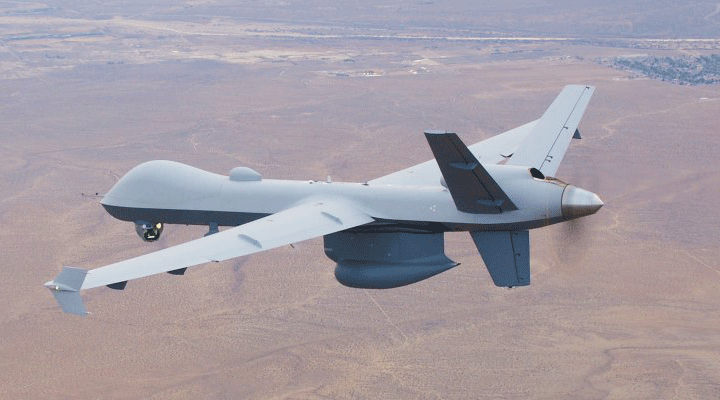It was just a month ago that we considered some implications behind the long-growing trend to contract-out the ongoing wars in Afghanistan, Iraq, Syria, and Yemen. Last month, we were contracting out intelligence analysts. Now, the Air Force is in search of a few new (contract) drone pilots.
In case you missed it, take a look at Michael Schmidt’s New York Times piece of last week, “Air Force, Running Low on Drone Pilots, Turns to Contractors in Terror Fight.” Schmidt begins, “Since the Sept. 11, 2001, attacks, the Pentagon has used contractors to perform many duties traditionally carried out by uniformed personnel, like protecting military bases and feeding service members.”
SUPPLY & DEMAND
In response to our early August “Contracting-Out Intelligence,” one ClearanceJobs.com reader wrote, “I know one of the reasons I left the military (and many others have) is because I got tired of being overworked, underpaid, undertrained . . . . Uncle Sam hammers them with 80-100 hours a week.” One response to the reader might be, well, this is war, and war is hell. Another more reasonable response might begin with a question of supply and demand, resources and requirements.
Indeed, we’re on year 15 of this war. While there’s much talk of coming to a conclusion, there’s really no end in sight. That’s, in large part, a result of the broad interpretation of the September 14, 2001, Authorization for Use of Military Force (AUMF). The liberal interpretation of the AUMF has in most every practical sense essentially removed Congress from its constitutional oversight responsibilities when it comes to declaring war and, by extensions, raising the military to fight it. However, as the Executive Branch incrementally expands the scope of these micro- and macro- wars, the Legislative Branch follows along, effectively silent. And the simplest result of the lack of the kind of oversight Congress is supposed to provide is that requirements are outpacing resources. The growing reliance on contractors to fight the war is indisputable evidence of this imbalance. To fill that gap, the Executive Branch buys an army, piece by piece.
The Constitution gives the responsibility to raise and support an army to the Legislative Branch, and Congress, not the President, declares war, for a host of reasons. The contractor effect we’re witnessing is a good one.
WE’RE IN THE MONEY FACTOR
Our ClearanceJobs.com commentor complained of too much work and too little pay. Understandably. That sense is exacerbated when an exhausted, over-stressed uniformed drone pilot is sitting beside a well-rested, fresh, relaxed contractor drone pilot making twice the salary and working half the hours. That’s no exaggeration. Schmidt reports, “Contractors are typically compensated far more than service members, and some current and former senior Air Force officials said their use could actually exacerbate the shortage in military drone pilots because the pay of the private sector might lure them away.”
Schmidt adds, “As the Obama administration has accelerated its campaign against the Islamic State in Iraq, Syria and Libya over the past 10 months, the Pentagon has added four drones flown by contractors to the roughly 60 that are typically flown every day by uniformed Air Force personnel. Over the next two years, the Pentagon plans to add six more operated by contractors . . . .”
That’s raising, or hiring, an army. Of course, contractors are never overworked and underpaid; contracts don’t allow it. More work, more money. Period.
A CONSTITUTIONAL CAN OF WORMS
In “Before We Pull the Drone Trigger,” we quickly considered the 2013 Presidential Policy on drone strikes and the web of legal complications and questions. That policy, combined with the ever-expanding AUMF that mathematically (supply v. demand) requires contractors to fight our wars (to achieve the effects we’d like to achieve) presents an even more complicated question.
Schmidt cites George Washington University Law professor Laura Dickinson. According to Schmidt, Dickinson sees the conundrum like this: “‘This is opening up a whole new can of worms . . . . With drones, this is a new area where we already do not have a lot of transparency, and with contractors operating drones there’s no clearly defined regime of oversight and accountability.’”
A CULMINATING POINT
These are important, sometimes very worrisome questions. They are, as well, incredibly complex. They are, for some and for some good reasons, emotionally charged. Twitter lawyers have fun batting them around and spooling each other up. But in all seriousness I suspect we’re approaching a culminating point, for our military and the AUMF, both of which may already have been stretched beyond the breaking point.
Perhaps that will drive a serious, national examination and sober discussion about where we started fifteen years ago, and where we’ve ended up.




